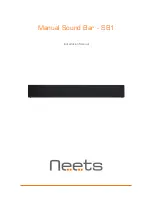
1835-065-J-7-14
49
SECTION 5 - SYSTEM OPERATING INSTRUCTIONS
Operating Instructions
are printed on most of the telephone entry systems.
The systems with LCD displays have a scrolling or static
Instruction Message
on how to operate the system (locating and calling the resident that they wish
to visit). The 1835 and 1837 systems utilize
“A” and “Z” scroll buttons
that
a guest will use to locate the resident that they are wishing to visit. Pushing
the
“A”
button will cause the resident directory to scroll up, pushing the
“Z”
button causes the resident directory to scroll down. Holding these buttons
down will cause the system to scroll or page through the resident directory
rapidly. Resident names are listed in the resident directory alphabetically.
Although the systems are similar in the way that they operate, they differ in the way that the
resident information is presented to the guest. The 1835 electronic directory display resident
names (or apartment numbers) and their respective directory code on a single line while the 1837
system displays a page of eight resident names at a time. The 1833 system relies on a separate printed
directory to provide guest with resident directory information.
1.
If the guest knows the residents
directory code
, they can simply enter it on the system keypad to place a call.
2.
If the guest does not know the residents directory code, they must check the directory and find the code assigned to the
person they wish to visit.
1833 Systems
- Guest must check the separate directory listing to locate the person they wish to visit to find their assigned
directory code. They must then enter this code on the system keypad.
1835 Systems
- Guest use the
“A”
and
“Z”
buttons to locate the name in the directory. Once the residents name is displayed,
the guest presses the
“CALL”
button and the system will connect to the resident’s telephone. The guest may also enter the
directory code
on the keypad to place the call.
1837 Systems
- Guest use the
“A”
and
“Z”
buttons to locate the name in the directory. When the desired resident’s name is
displayed on the page, the
“A”
and
“Z”
buttons are used to move the PUSH CALL cursor up and down. When the PUSH CALL
cursor is flashing on the desired resident’s name, the guest then can press the
“CALL”
button and the system will connect to
the resident’s telephone. The guest may also enter the
directory code
on the system keypad to place the call.
If the resident’s line is busy, the system will emit a busy signal. If this happens, the guest can press the # key or the
“CALL”
button to hang up and then try again. Residents can avoid missing calls from guests at the telephone entry system by ordering
call waiting from the local telephone company.
5.1 Guest Instructions
7
8
9
4
5
6
1
2
3
0
OPER
OPER
WXYZ
WXYZ
TUV
TUV
PQRS
PQRS
MNO
MNO
JKL
JKL
GHI
GHI
DEF
DEF
ABC
ABC
SP
SP
TELEPHONE
ENTR
Y
SYSTE
M
OPE
RA
TING
INST
RU
CTI
ON
S
Locate
Code
Nu
m
ber
on
Direc
to
ry.
Pres
s C
ode
Nu
m
ber
. If
Line
is
Busy
,
Pres
s “#”
to
H
ang
UP
. T
ry A
gain.
Ent
er
on T
on
e.
1.
2.
3.
A
Z
CALL
7
8
9
4
5
6
1
2
3
0
OPE
R
OPER
WX
YZ
WXYZ
TUV
TUV
PQRS
PQRS
MNO
MNO
JKL
JKL
GHI
GHI
DEF
DEF
ABC
ABC
SP
SP
Operating Instructions
1833
1837
Scroll Buttons
System Keypad
Instruction Message
System Keypad
Use
A Z
to
Find Na
me
Or Nu
mbe
r E
nter Co
de
On Keypad
Bu
sy Press
An
y Ke
y Tr
y Ag
ain
DTMF Tones -
The telephone entry system can output
DTMF
tones from the keypad
AFTER
a call has been answered.
• If the key is pressed by itself – the system will hang-up.
Example: = hang-up.
• If any key is pressed prior to the key, then
ALL
keys pressed will emit DTMF tones.
Example: = DTMF tones for all buttons including the key.
• If there is more than a 2-second delay between numbers and the key, then the key will hang-up the system.
Example: more than a 2-second delay = hang-up.
1
SP
SP
2
ABC
ABC
3
DEF
DEF
4
GHI
GHI
1
SP
SP
2
ABC
ABC
3
DEF
DEF
4
GHI
GHI
Содержание 1833 Series
Страница 2: ......
Страница 69: ...1835 065 J 7 14 67...
















































